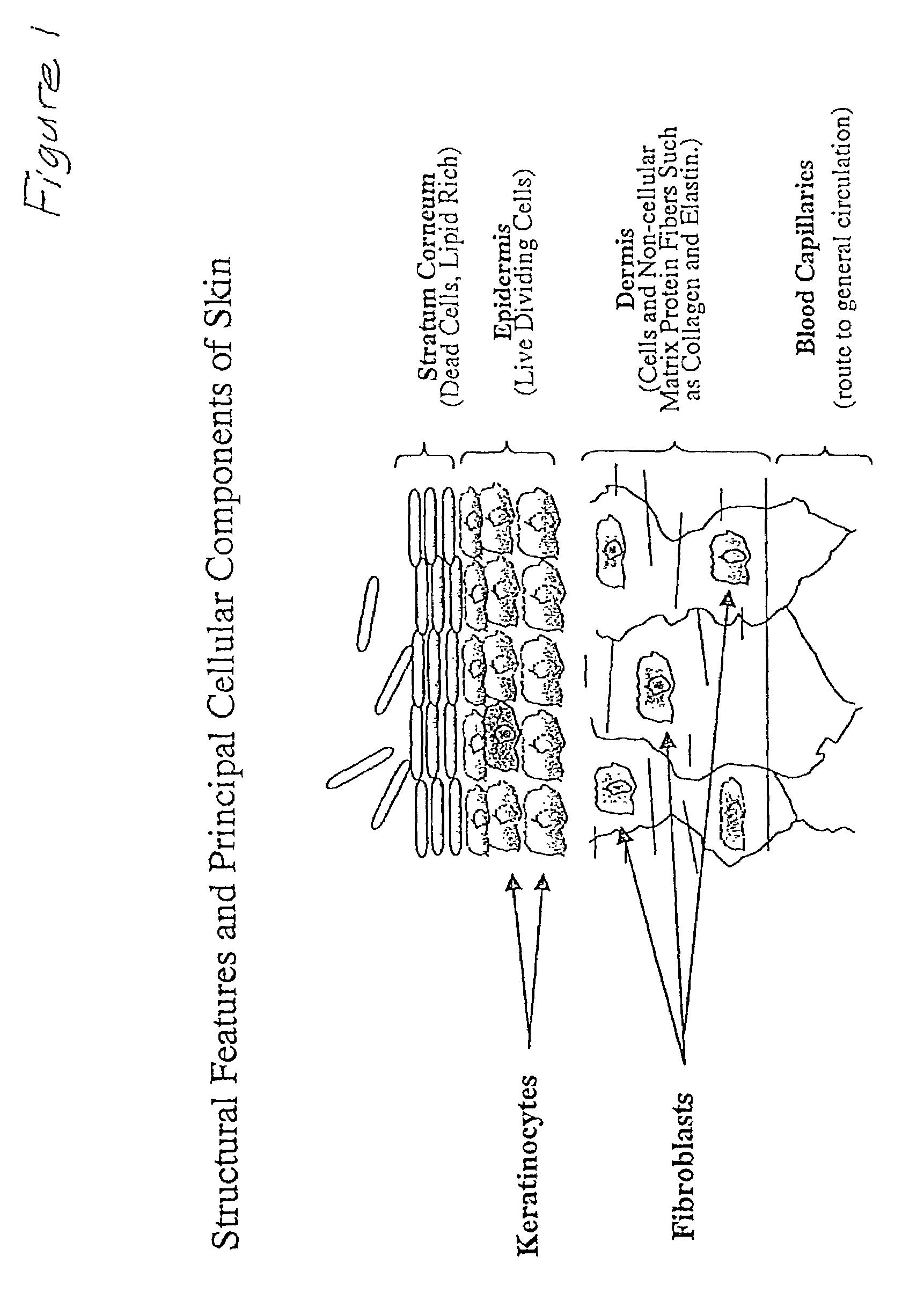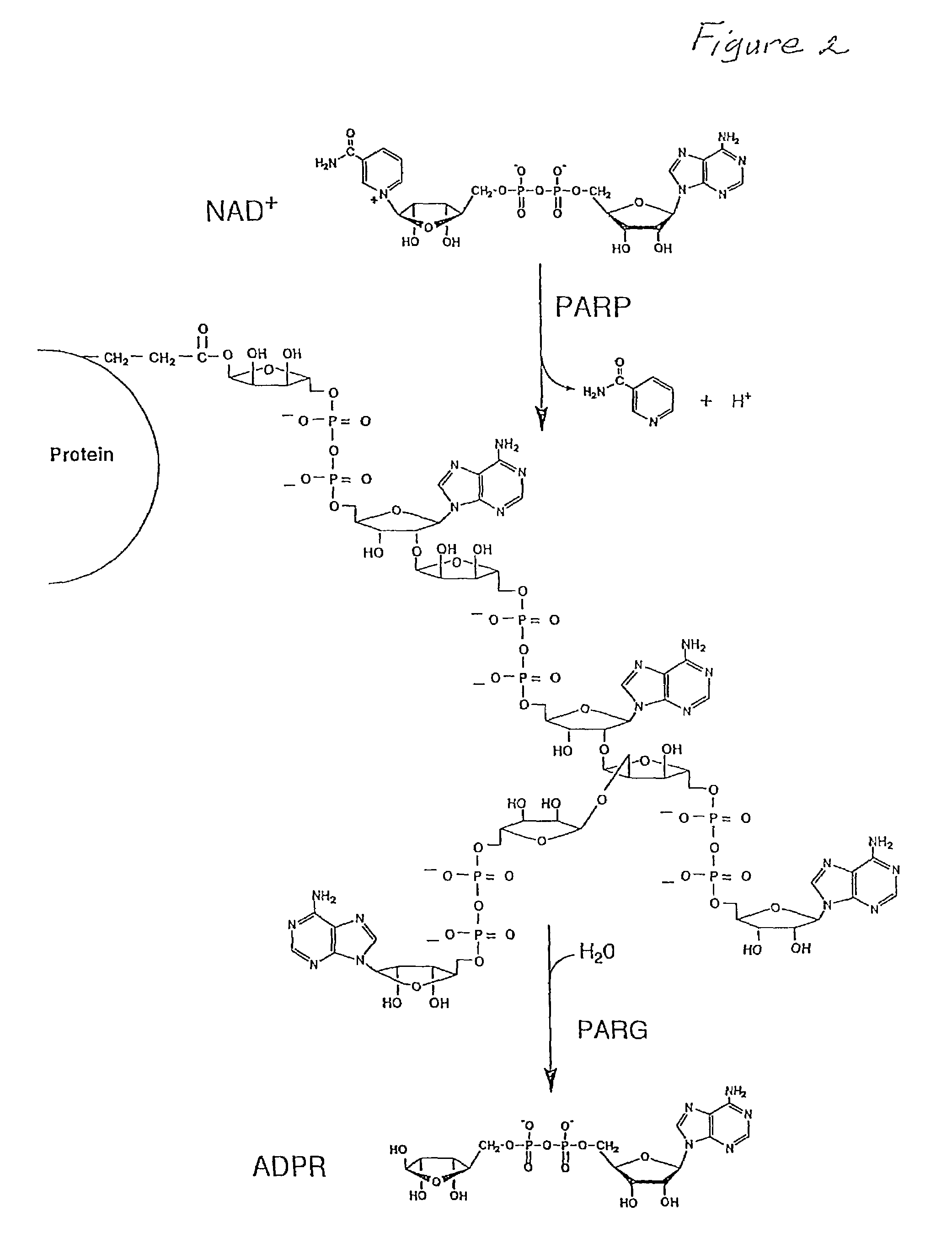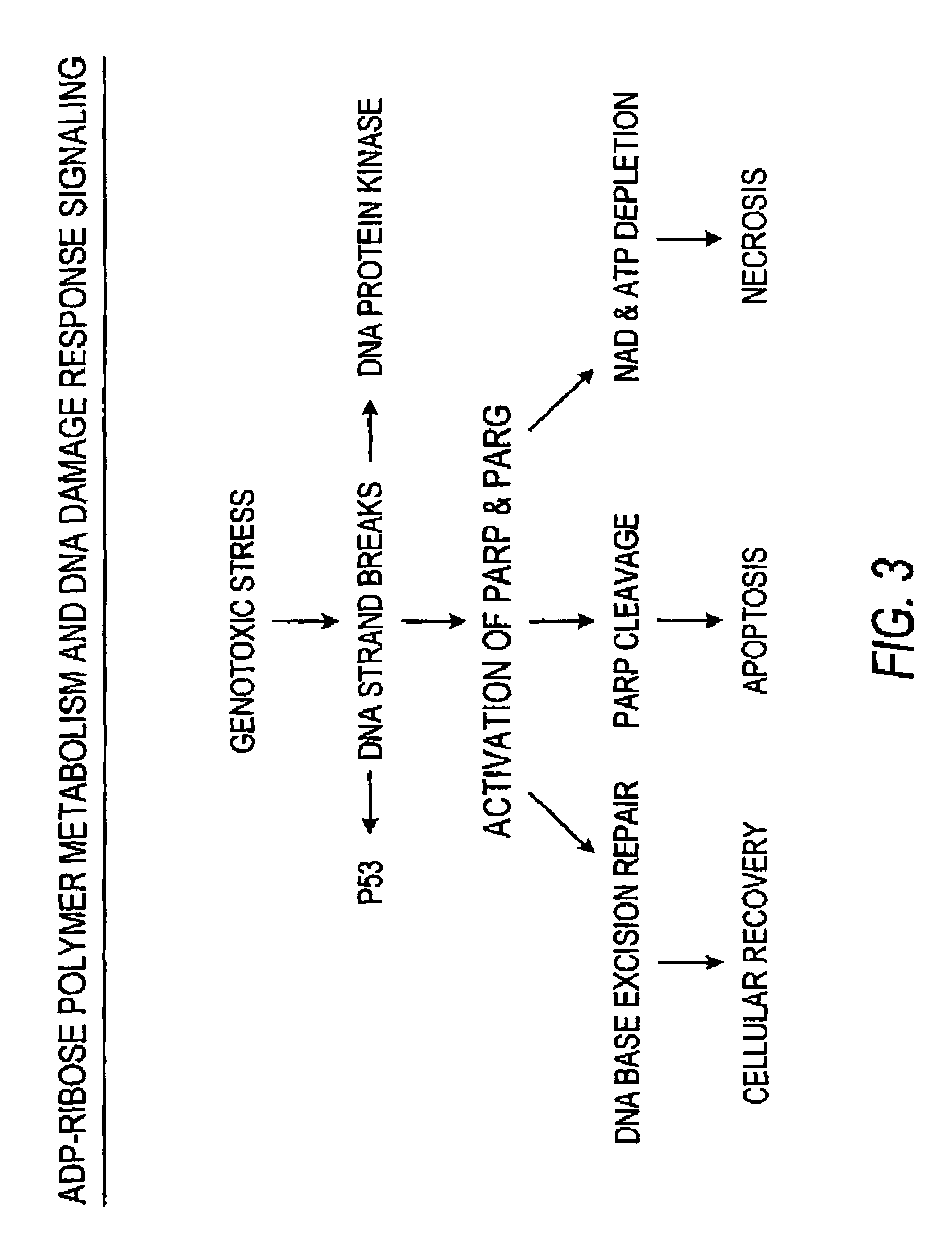Method for enhancing protective cellular responses to genotoxic stress in skin
a genotoxic stress and cellular response technology, applied in the field of skin genotoxic stress enhancing cellular responses, can solve the problems of reactive rather than proactive skin care methods and compositions, dna damage, skin deterioration, etc., to reduce the rate of natural deterioration, prevent development, and alleviate existing symptoms of skin deterioration
- Summary
- Abstract
- Description
- Claims
- Application Information
AI Technical Summary
Benefits of technology
Problems solved by technology
Method used
Image
Examples
example 1
Sub-Optimal Niacin Status Results in Skin Cells with Reduced NAD Content
[0101]The effect of culture media containing sub-optimal precursors of NAD on the NAD content of normal human fibroblasts and keratinocytes was examined. Briefly, normal human fibroblasts were cultured with 5% CO2 in nicotinamide supplemented medium or nicotinamide deficient medium. The nicotinamide deficient media used was Dulbecco's Modified Eagle Medium (DMEM) made without nicotinamide supplemented with 5% bovine senim. It may be made in the laboratory and is also available by custom ordered from commercial suppliers such as Life Technologies, Inc. (Rockville, Md.) or Sigma (St. Louis, Mo.). Nicotinamide supplemented medium is nicotinamide deficient media with supplemented with nicotinamide to 33 μM. After growth of the cells for several days, cells were extracted and analyzed for NAD content. The results of a typical experiment, showing that sub-optimal niacin status results in a decreased cellular NAD conte...
example 2
Increased NAD Content of Skin Correlates with Less Severe Skin Deterioration
[0103]Since the NAD content of red blood cells varies widely within the human population, the possibility that the NAD content of skin cells varies widely was examined in experiments that addressed two questions related to skin cell NAD content. The first question addressed whether the NAD content of human skin shows significant variation. Non diseased areas of skin were taken from normal human volunteers and assayed for NAD content. The data of FIG. 6 shows that skin taken from non-diseased areas of normal human volunteers varies more than 4-fold in NAD content.
[0104]The next experiment was designed to address the question of whether a correlation exists between skin cell NAD content and susceptibility to skin deterioration. In this experiment, non diseased areas of skin from individuals with lesser deterioration were compared for NAD content with non diseased areas of skin from individuals with greater det...
example 3
Determining the Correlation Between DNA Repair Proficiency and NAD Content
[0105]Since the NAD content of human skin cells varies widely, a series of experiments was performed to examine DNA repair and DNA damage response proficiency of skin as a function of NAD content. The ability of cells to recover from the cell killing effects of genotoxic stress depend upon their ability to repair DNA damage and activate multiple DNA damage response pathways in response to genotoxic stresses. Briefly, normal human skin fibroblasts and human skin keratinocytes were cultured in control or suboptimal niacin medium (i.e. nicotinamide deficient media of Example 1) as described for Example 1 above. This results in cells with normal or depleted NAD content. Cells were then exposed to solar simulated sunlight and the ability of the cells to recover from the different doses of sunlight was determined by measuring growth of the cells 5 days following sunlight exposure.
[0106]FIG. 7 shows that human skin f...
PUM
| Property | Measurement | Unit |
|---|---|---|
| time | aaaaa | aaaaa |
| time | aaaaa | aaaaa |
| time | aaaaa | aaaaa |
Abstract
Description
Claims
Application Information
 Login to View More
Login to View More - R&D
- Intellectual Property
- Life Sciences
- Materials
- Tech Scout
- Unparalleled Data Quality
- Higher Quality Content
- 60% Fewer Hallucinations
Browse by: Latest US Patents, China's latest patents, Technical Efficacy Thesaurus, Application Domain, Technology Topic, Popular Technical Reports.
© 2025 PatSnap. All rights reserved.Legal|Privacy policy|Modern Slavery Act Transparency Statement|Sitemap|About US| Contact US: help@patsnap.com



